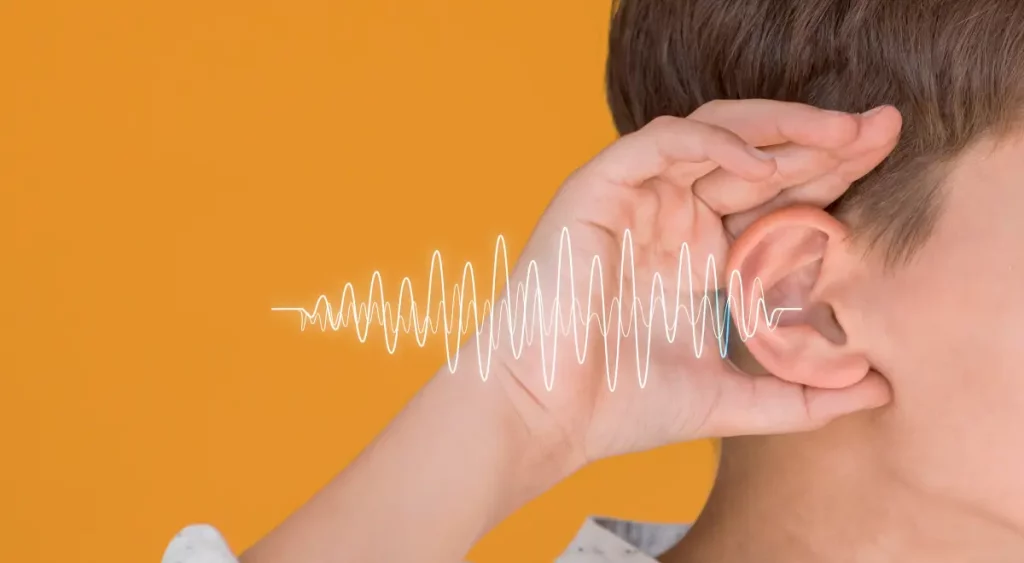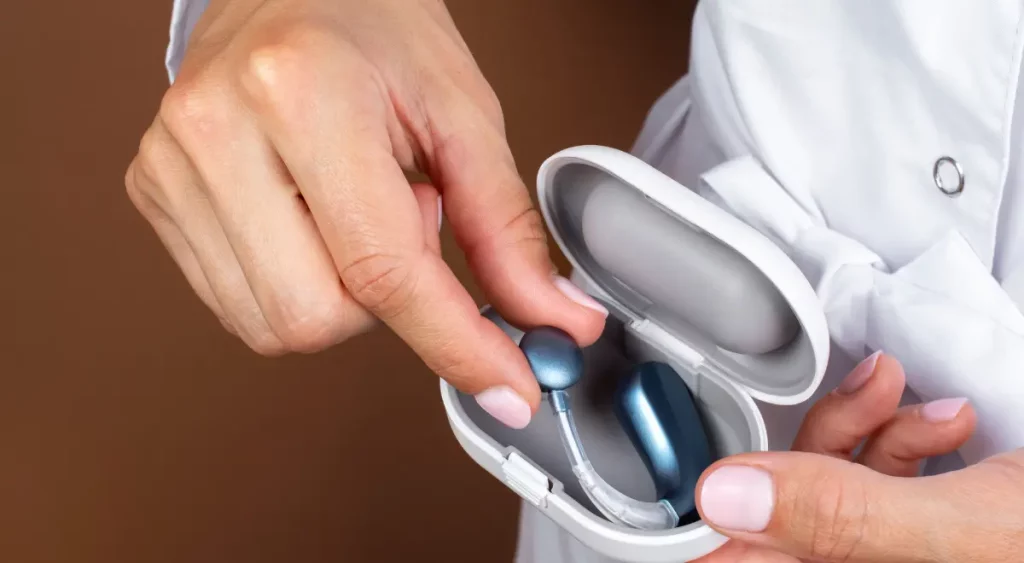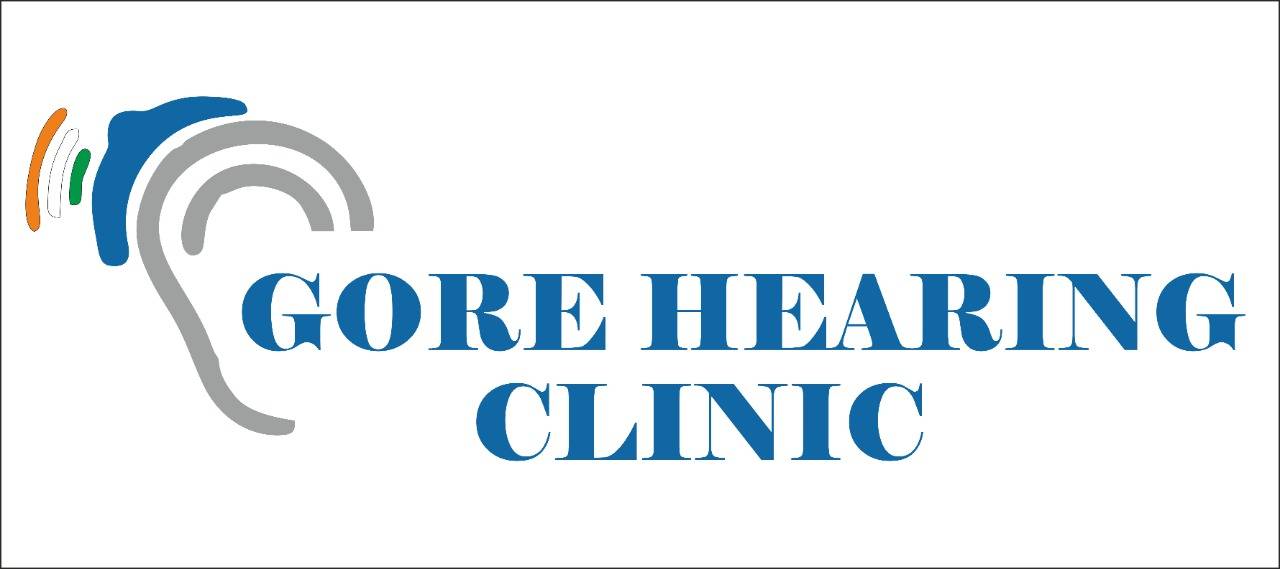Dealing with hearing loss is quite challenging, as even a slight hearing loss can impair your capacity to engage with family and friends and to fully experience the world around you. It’s important to seek the advice of a hearing aid audiologist, who can evaluate your specific needs and recommend the best course of action for your individual situation.
In recent years, there has been a significant increase in the use of modern rechargeable hearing aids, which have been introduced by major hearing aid manufacturers. These devices have the potential to enhance the hearing experience for those with hearing loss, and we will explore the benefits they offer in more detail.
Rechargeable Aids: what are they?

So, A hearing aid is multi-part technical equipment that requires complicated programming. The major components are an earphone, an amplifier, a speaker unit, and a battery drawer. Maintaining regular care and cleaning of all the components of your hearing aids is crucial for optimal hearing.
A hearing aid needs electricity to function, just like any other technological gadget. Now the question arises of what technology these rechargeable hearing aids work.
The Technology Behind These Rechargeable Aids
In the century since the first hearing aids machine were sold on the market, hearing aid technology has improved tremendously. The incorporation of rechargeable batteries is one of the most recent developments in hearing aid technology.
Rechargeable batteries that fit in hearing aids originally lacked sufficient power to be useful, which made them difficult to learn. But, lithium-ion technology has made hearing aids with rechargeable batteries durable and dependable.
Small, disposable button-shaped batteries are used in standard hearing aids. They are without a doubt the most popular choices. However, most recent rechargeable hearing aids contain built-in batteries that do not need to be removed, or at least not frequently. Instead, you link them to a charging station at night after taking them off.
The most popular kind of hearing aid available is a standard model with disposable batteries. Yet, thanks to technological developments, hearing aids with rechargeable batteries are slowly gaining popularity. They are effective, practical, long-lasting, and safe for people, animals, kids, and the environment. There may not be many styles available, but as rechargeable hearing aids gain popularity, manufacturers will almost certainly create additional options to satisfy the demand.
Rechargeable Hearing Aids

RECHARGEABLE NICKEL-METAL HYDRIDE BATTERIES
Nickel-metal hydride, or NiMH, batteries made up the majority of rechargeable hearing aid batteries until quite recently. The fact that these batteries use a tried-and-true technology that has been in hearing aids for more than ten years is a plus. There is no need to constantly struggle with tiny batteries and gadgets because they are frequently charged while within the hearing aid.
RECHARGEABLE SILVER-ZINC BATTERIES
Rechargeable silver-zinc batteries for hearing aids are a more recent innovation that shows a lot of potential. To begin with, they have a high energy density and can run continuously for 24 hours on a single charge. What if you don’t remember to recharge it and find out you’re short on power in the midst of the day?
Because the batteries in silver-zinc hearing aids are detachable, you can charge one while using a different one to run your hearing aids. If your silver-zinc rechargeable hearing aid battery needs to be charged, you can even replace it with a disposable battery and keep using your hearing aid. Silver-zinc battery systems can also be retrofitted.
RECHARGEABLE LITHIUM-ION BATTERIES
Lithium-ion rechargeable batteries are used to power a variety of devices, including laptops, smartphones, tablets, and even some medical devices like hearing aids. Because of their high energy density and small shape, they can seem like the ideal choice for a hearing aid. Lithium-ion rechargeable batteries actually deliver enough power for 24 hours of continuous operation, as hearing aid users can expect.
Do you dislike having to make minor battery changes? In sealed compartments inside the hearing aid, lithium-ion batteries are kept. They are not removable, so there is no need to strain to fit a tiny disc into the proper slot in your device. Simply put the hearing aid on charge throughout.
Selecting Suitable Rechargeable Hearing Aids
Your hearing is an important sense that connects you with individuals in your day-to-day life, from coworkers you have a cup of coffee with every morning to the family you come home to each night. If you’re combating hearing loss, consider how hearing aids could be the solution you need to easily communicate with the world around you again. When determining how hearing aids could benefit your lifestyle, consider the following four facts.
1. Hearing loss type and severity
Your preferred hearing aid style will depend on the type and severity of hearing loss you are experiencing. Depending on your particular hearing loss, lifestyle, and financial requirements, there are a number of different hearing aid solutions available, including:
- In the canal (ITC)
- Completely in canal (CIC)
- Canal invisible (IIC)
- In the ear (ITE)
- Behind to the ear (BTE)
2. Depending on your livelihood
While choosing hearing aids, you should take into account not only the type of hearing loss you have but also your way of life.
The hearing aid style might be less significant to you than the features it offers if you spend the majority of your time at home, whether you’re alone or with people. Bluetooth features are now found in many digital hearing aids, enabling them to connect to your phone, music, and television without any additional hardware. By doing this, feedback is decreased, and you may watch your preferred shows without disturbing your housemates.
Smaller hearing aid models like the ITC, CIC, and IIC might be preferable for people with more active styles because they are less discreet and less vulnerable to wind noise.
3. Preferences for visibility
A smaller, in-the-canal device would best meet your needs if you’d like to keep your hearing aids privately. Consult your ideologist to obtain a better understanding of the possibilities accessible to you so you can decide precisely which gadget is ideal for you. There are now some smaller BTE hearing aids on the market if you suffer from severe hearing loss.
The availability of a wide range of styles and pricing points, however, means that BTE and ITE models are also an option if you’re less concerned about the visibility of your hearing aids.
4. Additional elements
The quality of life for users of modern hearing aids has greatly improved because of the devices’ many advancements. A few common characteristics are:
- Telephony, music, and television services via Bluetooth
- Tinnitus-masking
- Rechargeable batteries
- decrease of background noise
Advantages and disadvantages of hearing aids
Advantages:
- There’s a chance you’ll hear sounds you haven’t heard before.
- The clarity of speech over the phone may improve.
- Your family and friends may be able to reach you more readily.
- In noisy environments, such as a restaurant or a large group of people, communication may be improved. Excellent for small groups, TV, cars, restaurants, and one-on-one conversations.
- Suitable for delivering brief amplification (i.e. hospital, nursing home)
- A good portable battery-operated size.
- Lower price
Disadvantages:
- Unlike contact lenses or spectacles, which can help people see 20/20 again, hearing aids DO NOT help people regain normal hearing.
- Any sounds, including background noise that you might not wish to hear, can be amplified by hearing aids.
- The typical adjustment time for hearing aids may last several months. In time, you might also need to change the settings on your hearing aids.
Conclusion
Rechargeable hearing aids are preferred over devices with disposable batteries by many people because they are more practical, ecologically friendly, and secure around children and animals. However, people will have to take into account fitting charging times into their lifestyle to ensure their hearing aids function when needed. There might be fewer styles and options of rechargeable hearing aids available.
Before making a final purchase, a person might want to think about their spending limit and preferred style. They might also want to consult a doctor to make sure they select the best hearing aid.

